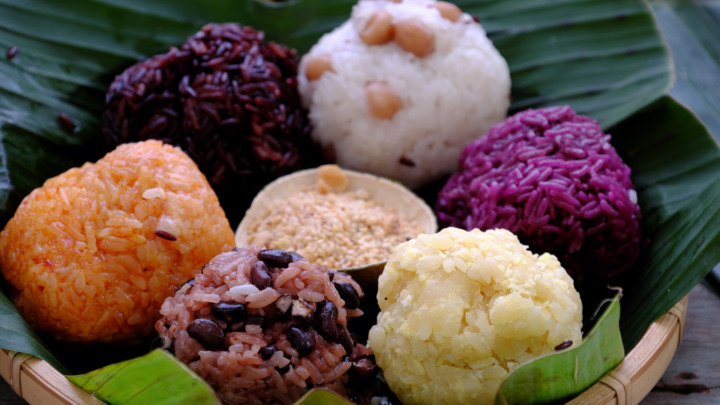Bún is the second most popular food after rice and pho, and is made from rice flour. Bún is a round, white, fibrous food made from glutinous rice starch that is molded into a mold and boiled in boiling water.
Bun” is a Vietnamese word, written ” ? ” in Nom (archaic Vietnamese).
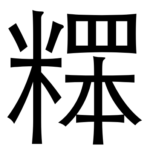
Although it is not a familiar character, you can tell from the letter that “rice” is used in the name.
Difference between Bun and Pho
First, they differ in appearance, such as “shape” and “color.
Buns are small, round in cross-section, and pure white in color, whereas pho is large and flat, rectangular in cross-section, and opaque white in color.
Secondly, there is also a difference in the use of the raw material, rice flour. When making buns, it is pressed into threads through small holes and immediately boiled in a pot of boiling water for two minutes, whereas in the case of pho, it is steamed and then cut into pieces.
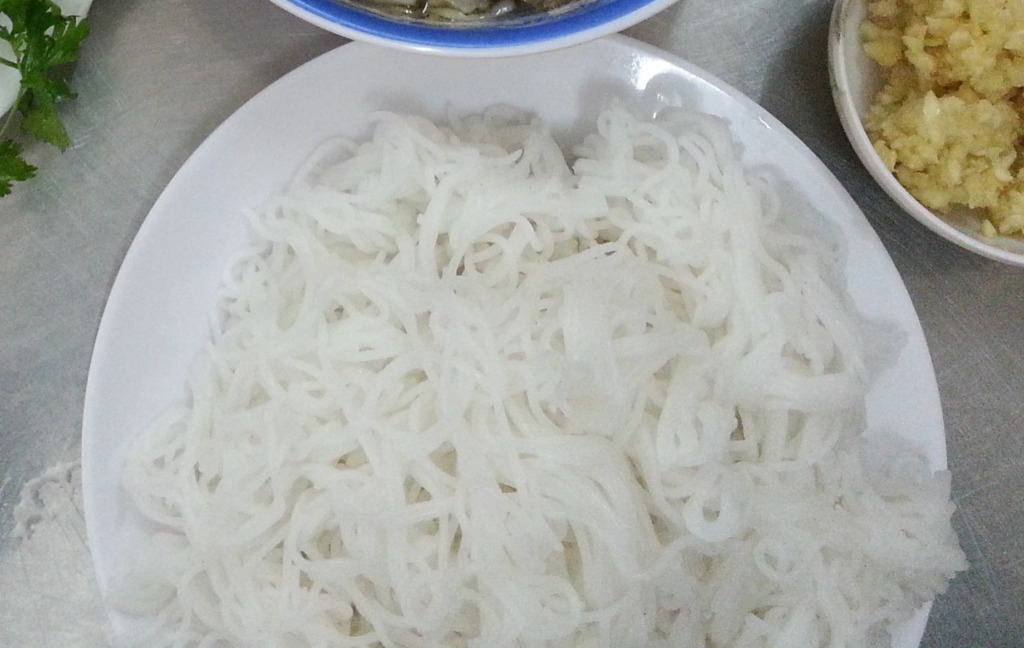
In addition, there is a difference in the process of fermentation in Bun, while in Pho, ground noodles are cooked immediately without fermentation to avoid acidity.
Raw Buns Production Process
The production of raw boon is highly technical and time-consuming to do by hand.
In the method, rice is first carefully selected, washed, and soaked in water overnight. Then the soaked rice and water are put through a mixer to make a soft, gluey rice flour.
The resulting dough is again cultured to drain off the sour water and then cut into balls about the size of an adult calf using a press. The cut balls are kneaded again, mixed into a liquid with clean water, and passed through a screen to remove grit and dust to form rice starch.
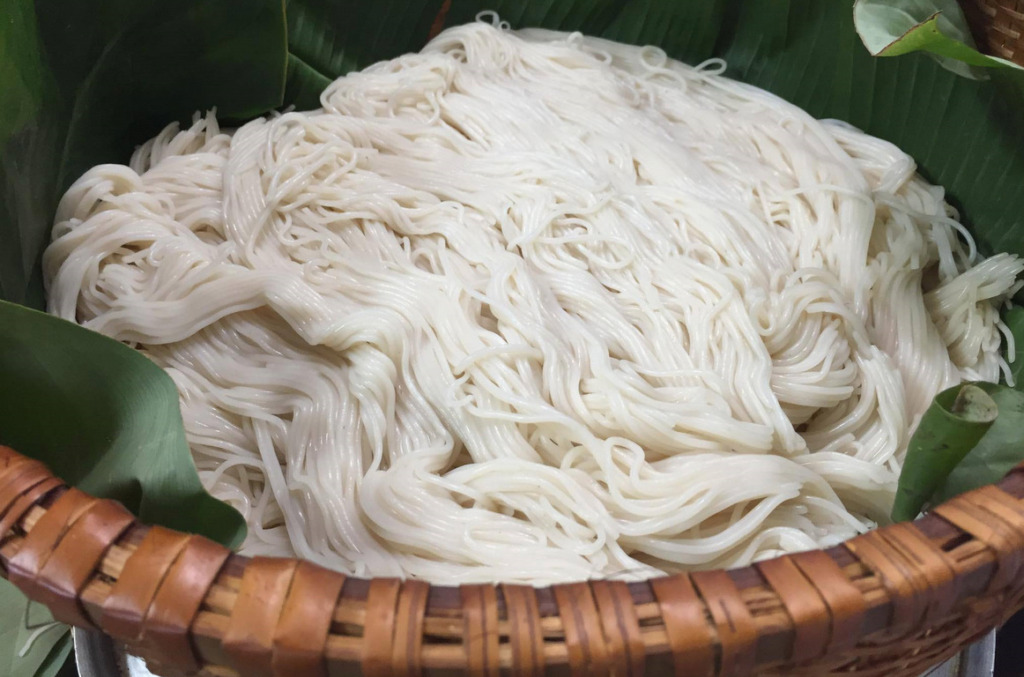
The resulting rice starch is placed into a long cylindrical forming mold for the boon. The top of the mold has round holes through which the rice starch flows evenly and is compressed to form the bún. The noodles are boiled in boiling water set under the mold for two minutes, then rinsed in cold water to prevent them from sticking to each other.
Today’s raw Buns are almost exclusively produced by machine.
Vietnamese Water Bun Cuisine
Water Bun” is a bun dish made with broth.
There are many variations, including one with crab meat, one with shiitake mushrooms and pork leg meat, and Bun Bo Hue with beef and herbs.
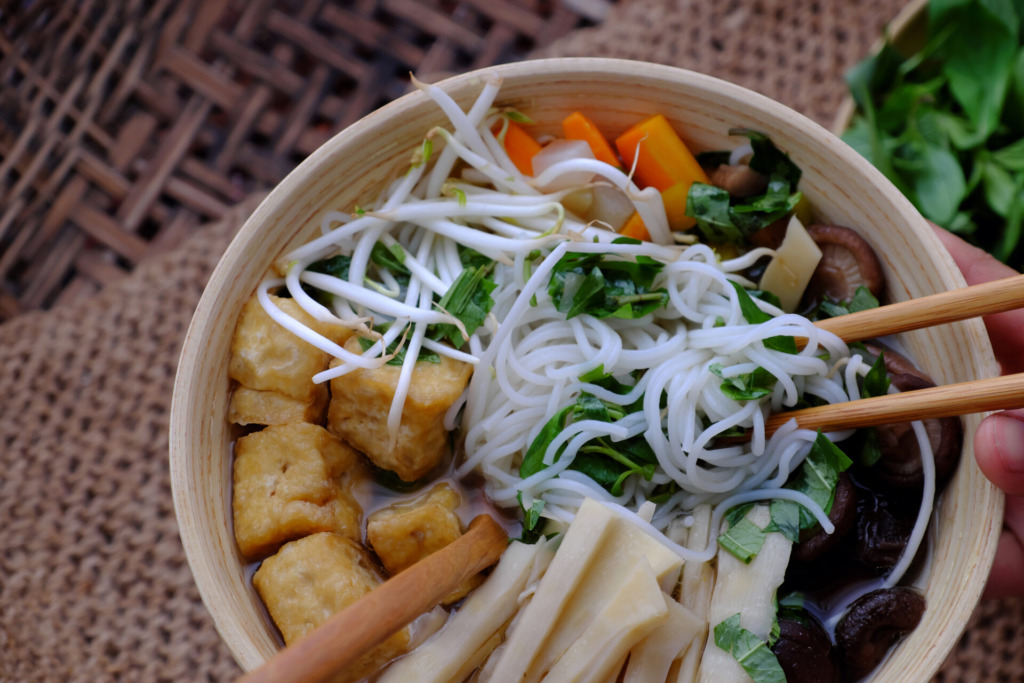
Bun cuisine soups often use bones, meat, fish sauce, and shiitake mushrooms as ingredients, and the broth is clear and sweet.
Place the boon in a bowl of boiling water, garnish with side dishes and herbs, and pour the broth over the boon.
dry-bun cooking
Some bún dishes are served with a separate soup.
Bun cha is a dish similar to what is called “tsukemen” in Japanese cuisine.
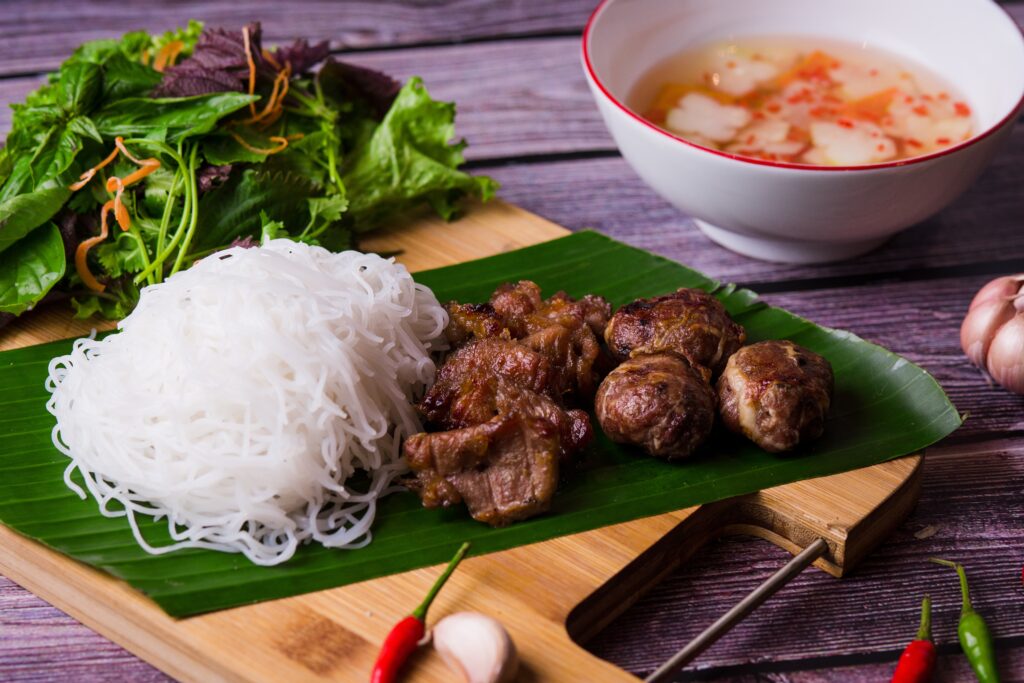
Bun noodles are placed on a plate and eaten by dipping a little bit into a bowl of dipping sauce with grilled pork.
These soupless bun dishes are often mixed with side dishes such as shrimp paste or paste with a special sauce, fried spring rolls, fried beans, or grilled meat.










